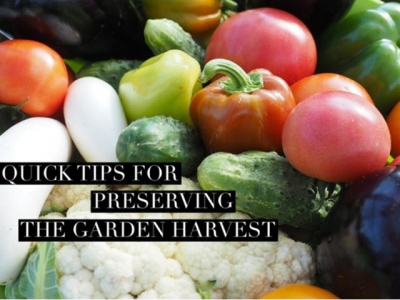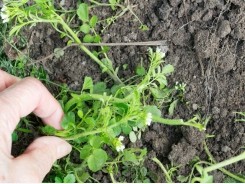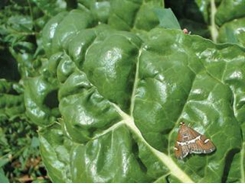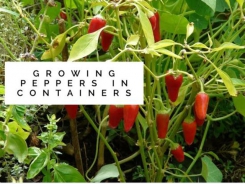Quick Tips for Preserving the Garden Harvest

Food preservation is a time-honored tradition that allows the abundance of the fall harvest to be saved for the winter months. The most time-consuming and labor-intense aspect of the harvest is usually its preservation once it’s out of the garden. It doesn’t have to be this way, however, as many modern food preservation techniques are faster and easier than their traditional counterparts.
Food preservation, put simply, is the storing of harvested food for later use. Most of the time, this means root cellaring, canning (bottling), freezing or drying. Today, many home gardeners prefer to freeze their harvest to save time and ensure good food storage without complications. Most commonly grown garden foods will freeze well and frozen vegetables and fruits can easily be thawed and used as if fresh.
HOW TO FREEZE VEGETABLES
Freezing is much faster and easier than canning or bottling. Canning requires a fair amount of processing, a lot of work over a hot stove, and leaves the uncertainty of some of the bottles not sealing properly, ending in spoiled food later. Freezing, on the other hand, requires only simple processing and a freezer.
If you’re using an adjustable freezer (even refrigerator-attached freezers are usually adjustable), turn it down to -10F a couple of days before you begin. This will lower the freezer’s temperature and speed up the process. It’s not necessary, but it does help. Two or three days after the harvest has been put into the freezer, you can turn it back up to its usual setting (usually 0F).
The easiest way to process and freeze vegetables is to do it over time rather than all at once. The most susceptible to spoilage should be done first followed by those that can be refrigerated, shelved, or even left in the ground for a while. Doing a lot of vegetables at once will put a strain on any freezer and will make the process take longer in the long run.
If using Tupperware-style containers, make sure to fill them completely and to seal them tightly before stacking in a freezer. Use masking tape and a marker to clearly label the containers (including the date!), even if they are transparent. These containers have a way of fogging up, making it hard to distinguish one green vegetable from another.
Plastic freezer bags are another good choice. Flatten them and push all of the air out before sealing to minimize freezer burn. Flat bags are easier to stack and also thaw out faster than do stuffed roundish bags. Again, label them clearly and include the date.
In all cases, as soon as the vegetables are processed and packaged, they should go right into the freezer. This will kill bacteria and other microbes quickly, preserving the food from rot or flavor loss. Most people prefer to freeze their vegetables “ready to cook” – green beans are cut, spinach is trimmed, peppers are diced or sliced, etc. This makes them easier to use later and reduces their volume for storage.
Preserve Garden Tips
VEGETABLES THAT FREEZE WELL
Many vegetables do well in the freezer. Green beans, peas, carrots, peppers, spinach, most herbs, Brussels sprouts, etc. can all be frozen raw after only cleaning and perhaps cutting/trimming. If storing raw, these vegetables should be thoroughly cleaned, dried, and trimmed of any excess. They should then be packed together closely into their containers and put directly into the freezer.
Some vegetables require blanching before freezing. Leafy vegetables and less “solid” varieties are often the choice. Asparagus, some beans (lima, snap), beets, broccoli, cabbage, mushrooms, okra, most squash, potatoes, and tomatoes will all need to be blanched before frozen. Many also blanch Brussels sprouts and other vegetables that are normally served blanched anyway, making it easier to quickly heat and eat them.
Blanching is simple, but if processing more than one type of vegetable, do not use the same water for all of them, but use new water for each vegetable type. This keeps cross-contamination of flavor from ruining the food. Simply boil the water and dip the vegetables in it and wait for the water to re-boil (use about 1 pound of vegetables per gallon of water). Then time for about 2-3 minutes and remove to cold water, usually a rinse. Then dry and freeze. Steam blanching is also a good method.
STORING GARDEN VEGETABLES TO LAST LONGER
Many root crops such as potatoes, as well as hard-shelled crops like butternut squash, can be easily stored without freezing. These require only steady temperatures and relatively stable atmospheric conditions to stay edible for months at a time.
For shorter-term storage, most fresh garden vegetables and fresh cut herbs can be refrigerated. Do not cut or break them if it can be avoided, as these breaches of the plant’s skin will be where rot will begin. When refrigerating, store in a space that allows good circulation and that is furthest away from the cooling fans/elements of the fridge. Most modern refrigerators have vegetable trays or drawers that are the perfect choice.
Related news
Tools

Phối trộn thức ăn chăn nuôi

Pha dung dịch thủy canh

Định mức cho tôm ăn

Phối trộn phân bón NPK

Xác định tỷ lệ tôm sống

Chuyển đổi đơn vị phân bón

Xác định công suất sục khí

Chuyển đổi đơn vị tôm

Tính diện tích nhà kính

Tính thể tích ao




 What is a pepper, actually?
What is a pepper, actually?  Hot or Sweet, You CAN Grow Peppers in…
Hot or Sweet, You CAN Grow Peppers in…